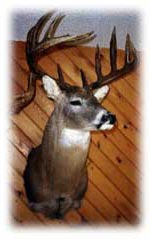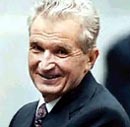| Hunting | |
| Adventure | |
| History | |
| Environment | |
| Getting Around | |
| When to Go | |
| Travels | |
| Attractions | |
| Travel Stories | |
| Our offer | |
| Contact us | |
 |
|
| Transylvania | Brasov | Bran | Scornicesti | Bucharest |
| Black Sea | Danube Delta | Fagaras | Sinaia | Bucovina |
| Maramures | Sighisoara | Iasi | Cluj-Napoca | Timisoara |
|
 |
|||
Gee, thanks, Mr President! Amazingly enough, the bulldozers did not make their way to Ceausescu's childhood home, which is now the main attraction here. It's at the northernmost end of the village and is not officially open to visitors - but the women in the kiosk opposite will sell you a 50 cents ticket, escort you down the path, and leave you to face the wrath of Ceausescu's sister who lives opposite. Act humble, and she'll invite you inside the two-room house where Ceausescu lived until the age of 11, when he moved to Bucharest to become an apprentice cobbler. Scornicesti is accessible only by car, west of the Pitesti-Craiova road. Nicolae Ceausescu was the leader of Romania from 1965 until he was overthrown and killed in the revolution of 1989. Early in his life he played an active role in the Communist party, which resulted in imprisonment in 1936 and 1940. In 1939 he married another highly devoted Communist, Elena Petrescu. Once the Communists fully gained power in Romania in 1947, Ceausescu headed the nation's ministry of agriculture and served as deputy minister of the armed forces. Eventually he rose up to the second highest position in the party, holding important posts in the Politburo and Secretariat. After Gheorghiu-Dej 's death in 1965, Ceausescu became the leader of the state and president of the State Council. In the 1960s he ended Romania's participation in the Warsaw Pact and condemned the invasion of Afghanistan by the Soviet Union. After becoming President in 1974, Ceausescu began to run the country in a militant fashion. His secret police held tight control of free speech and the media. In 1982 he ordered most of Romania's products to be exported in order to pay off a ballooned foreign debt due to his mismanagement. The lack of agricultural and industrial resources crippled the country and the lack of medicine, food, energy, and other basic necessities drove the people to the brink of starvation, while the Ceausescu's outrageous consumption continued unabated. The population finally rebelled when Ceausescu ordered his forces to fire on antigovernment demonstrators in Timisoara. On December 22, 1989 he and his wife were captured and on Christmas Day they were both executed by a firing squad. Elena Ceausescu was born on January 7, 1919. Born into a poor family - her father was a plowman - her formal education ended after the fourth grade. In the 1930s she met her future husband Nicolae while being active in an underground Communist party. They were then married in 1939 and from that point on they were a team, never parting. Nicolae appointed her to the Nation Council of Scientific Research. Two years later Elena was awarded her Ph.D. in industrial chemistry despite having had other people do the work for it. All her supposed scholarly achievements and awards were entirely fraudulent. Indeed, she was seen many times dozing off, open mouth, when scientific papers were discussed. In 1980 she was appointed the first deputy Prime Minister in the Council of Ministers, the number two position behind her husband. By the time Elena started to gain power in her husband's government the country was starting its downfall. She lived her life with countless luxuries, including 40 homes, even as the Romanian people faced deprivation. In the end, the much despised Elena was executed by her husband's side on December 25, 1989. |
||||